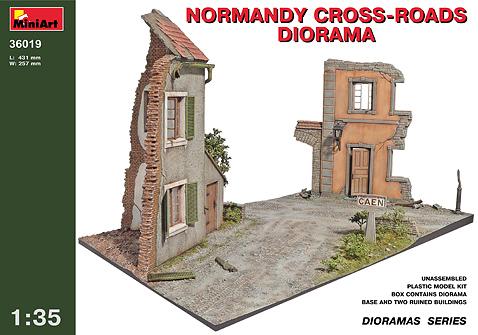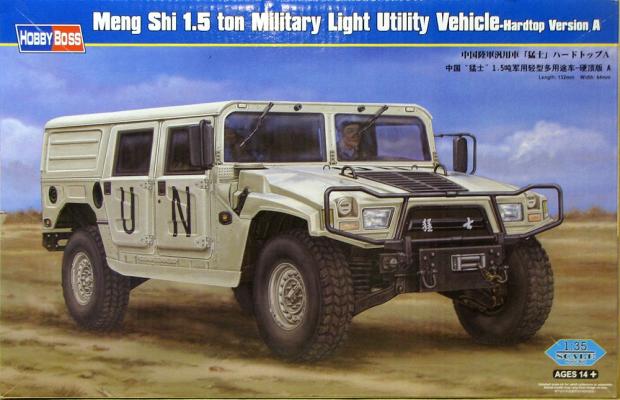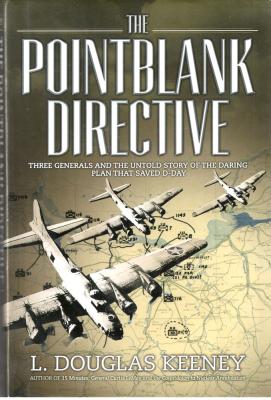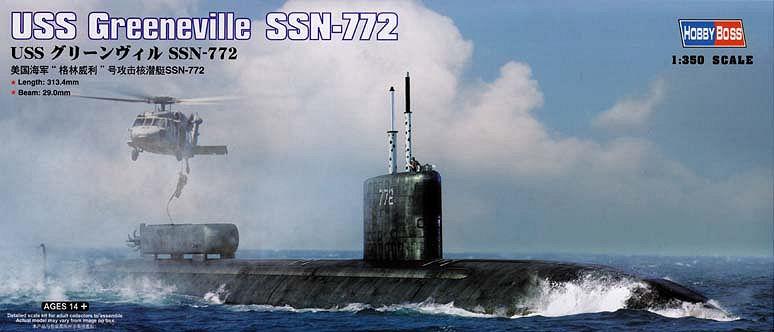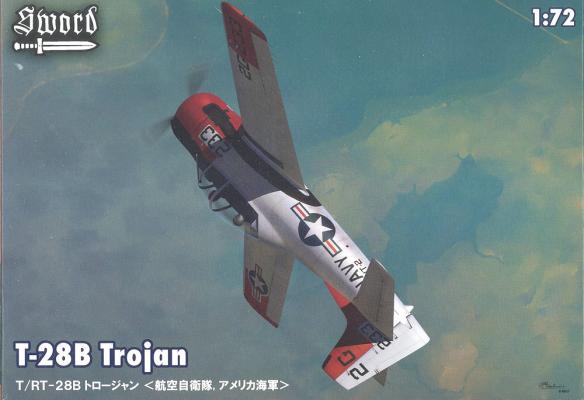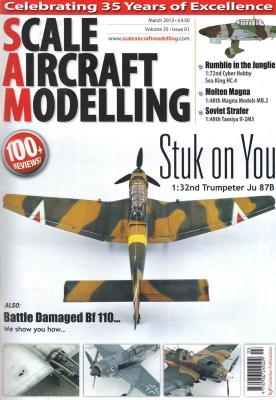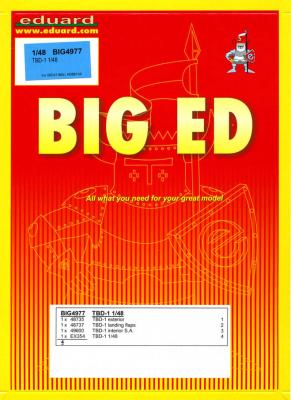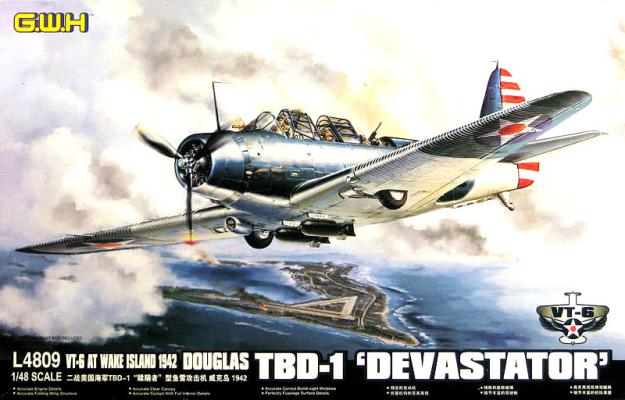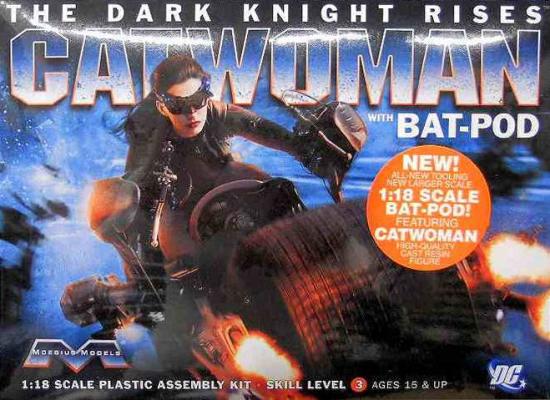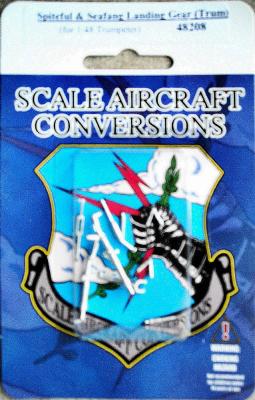Another addition to MiniArt’s ever-expanding portfolio of World War II diorama shells is their Normandy Crossroads kit, depicting a crossroads in the ill-fated city of Caen, ravaged by Allied aerial bombardment in a vain attempt to dislodge entrenched Nazi defenders in June and July of 1944.
What's New
Hobby Boss continues its run of tanks and vehicles from the Peoples Liberation Army (PLA). When you look at the cover art for this kit, the vehicle bears a strong resemblance to the iconic HMMWV. Well, this was based on said vehicle. It’s manufactured by the Dongfeng Motor Corporation for the PLA. I don’t know if this means Hobby Boss will also begin producing the HMMWV line, but their catalog indicates several variants of this vehicle in the works. The kit of approximately 170 parts includes six sprues and several body parts, one small sprue of clear parts, a fret of photo etch, four tires, and decals. As with most Hobby Boss kits, it includes two color profiles, one for a UN mission and the other for the PLA. The PLA version has no markings. The parts look great, with a fair amount of detail, though there was a small amount of flash on some of the parts.
Thank you to Bruce Herke of Osprey Publishing and the IPMS Reviewer Corps for allowing me the opportunity to review this in-depth and sobering history of the Army Air Corps’ operational role in the D-Day invasion. Author L. Douglas Keeney provides compelling descriptions of the challenges, dangers, and slim survival odds of European air operations.
History Brief
Our subject is a Los Angeles Class submarine, the USS Greeneville, SSN-772. It was named after the city of Greeneville, Tennessee, home of President Andrew Johnson, and is the only US Navy ship to have borne that name. She was ordered on 14 December 1988 with the contract going to Newport News Shipbuilding and Dry Dock Company in Newport News, Virginia. Her keel was laid 28 February 1992, she was launched 17 September 1994, and commissioned on 16 February 1996. The Greeneville had a few bumps and mishaps early in her career but is still serving proudly today.
Our model features an ASDS Advance SEAL Delivery System. It is basically a midget submarine that rides piggyback on larger submarines and is primarily used for covert and clandestine operations by the US Navy SEALs.
When Steve Collins and Dick Montgomery announced that the 1/72 T-28B was available for review, I jumped at the chance. I have seen T-28’s flying, at Keesler AFB, Mississippi, when I was there in 1967, and my Guard unit flew T-28s in 1957-58 between the F-51s and the F-84s. Alas, both of these were T-28A’s, not B’s. But when I saw the back of the box, I immediately knew I had to build the one from VT-27, as it was based just down the road at Davis-Monthan AFB in Tucson, Arizona, in 1983. Some day I’ll find out what the Navy was doing flying out of DM.
THE AIRCRAFT
The North American Aviation T-28 Trojan is a piston-engined military trainer aircraft used by the United States Air Force and United States Navy beginning in the 1950s. Besides its use as a trainer, the T-28 was successfully employed as a counter-insurgency (COIN) aircraft, primarily during the Vietnam War. T-28s were built from 1950 to 1957.
This issue represents a milestone for SAM. This is the inaugural issue for Volume 35. Thirty five years of providing a high quality publication to the modeling community is a momentous event and SAM deserves a “Well Done” for that remarkable achievement.
Even if this issue were not the launch for Vol 35, it would have caught my attention immediately. There, on the cover, is one of my favorite modeling subjects. In any scale, the Ju-87 has always been an enjoyable project for me, and in 1/32nd, by Trumpeter, well, it just doesn’t get any better than that. In 9 pages of richly detailed text, Editor Jay Laverty shares the tools and techniques he used to produce an excellent model of the Ju-87B-2.
Years ago, Eduard produced a photo etch set for the Monogram Devastator that really breathed some life into that venerable old kit. With the release of the new Great Wall Hobby Devastator, once again Eduard comes through with a PE set that pushes detailing well beyond the already superb lever that the kit itself provides. I had hoped to receive this set in time to use it with the GWH Devastator that I was building for IPMS review. As it turned out, the Devastator build was nearly completed before this set arrived. Nevertheless, here’s a rundown of what you get.
This new Big Ed set is a combination of four photo etch sheets and a complete set of vinyl canopy and wheel masks. The Flap sheet has supports, bracing, and flap parts for both the upper and lower wing. This is especially helpful, as there is a noticeable gap created with the joining of the kit’s lower wing to the fuselage. These parts should hide that opening completely.
For decades, the venerable Monogram TBD Devastator was the only kit of its kind available in 1/48 scale, lauded in its heyday for its cockpit and surface detail, as well as the option to pose the wings in either the folded or extended position. Now, Great Wall Hobby has delivered a new Devastator, and like the original release, this second edition is a quantum leap past the old benchmark kit. When first seen, the GWH Devastator was derided as a mere copy of the Monogram version, but close examination reveals that the new kit is several steps beyond its aged predecessor.
Moebius has issued this model of Catwoman with the Bat Pod from the 2012 movie The Dark Knight Rises. The kit comes in two builds – the Bat Pod, which is all styrene, and Catwoman (who was played by Anne Hathaway), which is in six resin pieces. The styrene parts are black, crisp, and free of any imperfections. The resin is absolutely flawless.
Unlike my last review sample of SAC products, this time the USPS did not wreak havoc on the package and all but destroy the contents! They delivered an intact and fully usable set of landing gear.
What you get in the package is a full gear replacement in white metal for both main gear legs and the tail wheel. As you can see from one of the photos, the SAC gear has simplified things by making the compression scissors one piece versus two pieces.
Detail is crisper on the metal gear than on the kit’s plastic parts, as has come to be expected from SAC. The replacement parts are a drop fit with no issues whatsoever. They worked flawlessly and added considerably to the look of the finished model.

